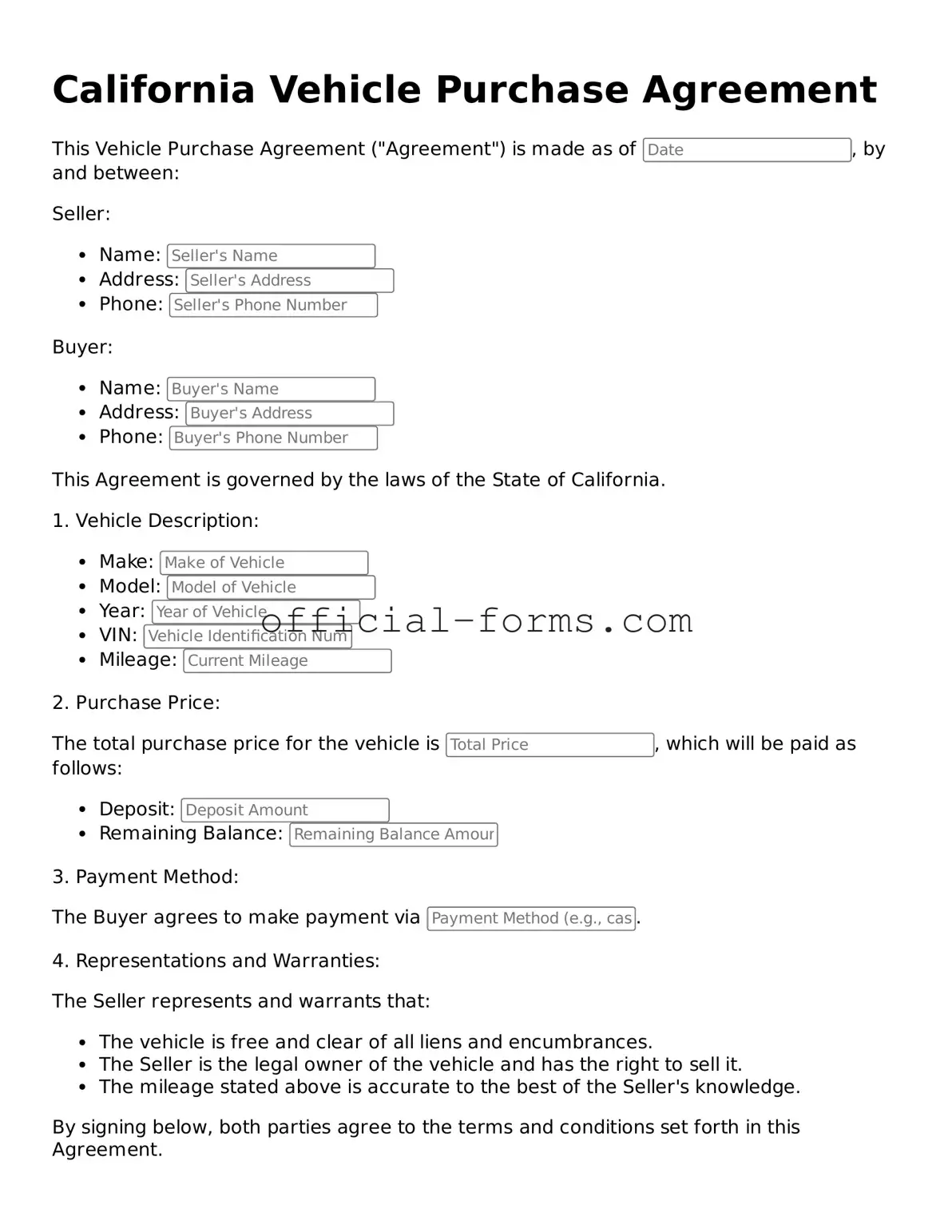Official California Vehicle Purchase Agreement Document
The California Vehicle Purchase Agreement is a legal document that outlines the terms and conditions of a vehicle sale between a buyer and a seller. This form serves to protect both parties by detailing the specifics of the transaction, including price, vehicle details, and payment methods. Understanding this agreement is essential for anyone looking to buy or sell a vehicle in California.
Open My Vehicle Purchase Agreement Now
